by Norbert Schiller
Photographs from my personal collection
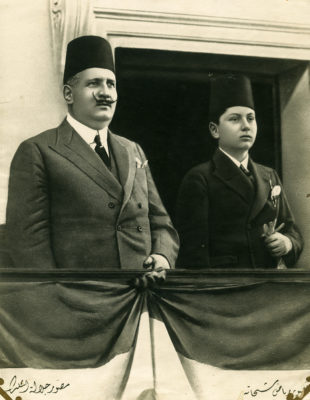
Crown prince Farouk pictured with his father king Ahmed Fuad I. Phot. Riad Shehata
It’s hard to imagine what the fallen king was thinking as he watched the sunset and the coast of Africa disappear over the horizon. A few months earlier, everything seemed to be going so well. World War II was over, Britain’s Sir Miles Lampson – the king’s biggest headache – was gone, and Farouk had finally produced an heir to the throne. So what went wrong?
By July 1952 Farouk had survived 15 years as the undisputed king of Egypt. With the untimely death of his father, King Ahmed Fuad I, the 17-year-old heir was forced to take the reins of a country he had absolutely no idea how to rule. Up until then he had been living in the harem with his mother and sisters, and only six months prior to his father’s death he was sent off to attend school in London. Farouk had never participated in government and was hardly ever seen at official functions by his father’s side. To his misfortune, as soon as he ascended to the throne as a boy-king, the drums of war began to sound throughout Europe and Africa. With Mussolini well-entrenched in Ethiopia and Rommel’s war machine racing across North Africa towards the Suez Canal, Great Britain had to maintain absolute control over Egypt and Sudan. Lampson, Britain’s former High Commissioner to Egypt and the Sudan, was given the task of keeping an eye on the new king.
From the very beginning, Lampson was like a pin in Farouk’s side. When the threat of war came knocking at Egypt’s door, the pin became a thorn. Lampson’s first worry was the amount of Italian advisers the king had on his payroll. Then there was the presence of Germany supporters among the Egyptian people who saw Berlin as a liberator from British colonial rule. In 1942, when Farouk dissolved Hussein Sirry’s government and appointed a new prime minister sympathetic to the Axis powers, a livid Lampson sent British troops to surround Abdine Palace. In the end Farouk backed down and appointed the pro-British Mustafa el-Nahas Pasha as prime minister and Britain kept Farouk on the throne. When the war ended, Lampson was transferred to the Far East and Farouk looked as if he had everything under control.
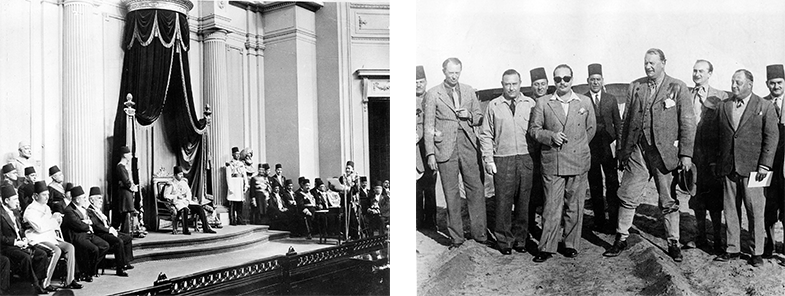
King Farouk listens to Prime Minister Mustafa el Nahas Pasha delivering a speech at the opening of parliament in December 1942. King Farouk on a hunting trip with foreign dignitaries including British ambassador, Sir Miles Lampson (R of Farouk), in January 1943. Phot. (L) Riad Shahata, (R) unknown
After the creation of the Arab League in Cairo in 1945, Farouk became the de facto leader of the Arab World and hence, it was only fitting for him to lead the fight against the newly created Jewish state in 1948. Besides, Egypt had the largest standing army in the region, although it had no fighting experience, and it shared a border with Palestine. Yet, in no time Egypt suffered a humiliating defeat against what many had considered to be a rag-tag Israeli army, using unconventional guerrilla tactics. For Farouk, the Arab defeat would mark a turning point and the beginning of the end to his rule.

King Farouk escorts Saudi King Abdul Aziz on his first official trip to Egypt in January 1946. A young King Farouk visited troops during maneuvers near the Suez Canal in March 1938. Phot. unknown
To understand the king’s demise, one must not only look at the political events that had shaped Egypt up until 1948, but also at how Farouk portrayed himself. Like his father, Farouk was conscious of the power that photography had in legitimizing his rein. Fuad’s most conspicuous disadvantage during his 20-year rule was that he didn’t speak Arabic; all official business was conducted in Italian. He made sure that this would not happen to his only son. From an early age, Farouk took private Arabic lessons. Because he couldn’t communicate with the commoner, Fuad made it a point to be seen by his countrymen. With the advent of the portable camera, Fuad was able to create an image to match his title. He had all of his journeys into the countryside documented and printed in the newspapers to show that he was in touch with his subjects. Numerous photo albums still abound depicting Fuad at one inauguration after another, strolling through temples, or conducting business with various European leaders. However, the camera never revealed a personal side of the monarch. After Fuad’s death, the young heir was able to use the camera to his advantage as well. On his first journey throughout the country, he had an army of photographers in tow documenting his every move. In 1938, Farouk’s postcard wedding with the young beauty, Safinaz Zulficar (later renamed Queen Farida), was more than just a photo op; it was an opportunity for the masses to fall in love with their new royal couple.
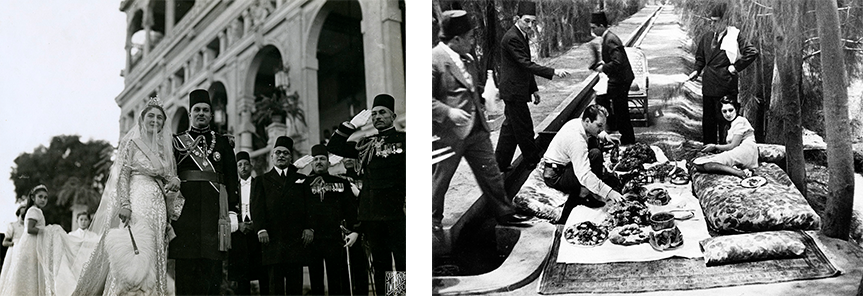
King Farouk’s picture postcard wedding to this first wife, Safinaz Zulficar, later renamed Queen Farida, in 1938. The newlyweds enjoy a picnic beside a small irrigation canal. Phot. (L) Jean Weinberg, (R) unknown
After ten years of marriage, which produced three daughters, the couple divorced. It was no secret that the two had fallen out of love years before, but the fact that there wasn’t a male heir must have weighed heavily on their relationship.
In the latter part of the marriage, Farouk was seen frequently womanizing at the hottest night spots in Cairo and Alexandria. In Egypt, the king’s gallivanting was put under wraps by the palace censorship office, but abroad pictures of a fat balding king surrounded by Europe’s social elite were splashed across the world’s tabloids.
With no wife, no heir, and a humiliating defeat to Israel under his belt, Farouk seemed to be spiraling out of control until he met the voluptuous 16-year-old commoner, Narriman Sadek, in late 1949. Once it was announced that the couple was to marry, Narriman was sent off to Italy to learn proper etiquette on how to become a queen. When the engagement was announced, the prime minister went on national radio and paid tribute to the king for selecting his wife from the ranks of the common people.
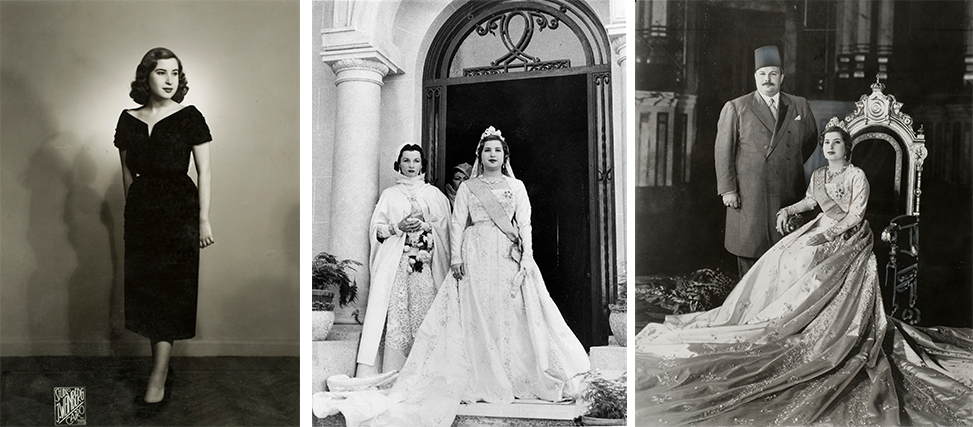
Farouk’s second wife was 16-year-old Narriman Sadek, a commoner. The wedding took place in May 1951. Phot. (L) Jean Weinberg (C) unknown (R) Riad Shehata
From the onset, Farouk refused to relinquish his bachelor ways, and soon his follies started to get noticed. The more he surrounded himself with foreigners, the less palace protocol seemed to matter. Since cameras were no longer exclusively in the hands of palace photographers, compromising images of the playboy king found their way to the streets.
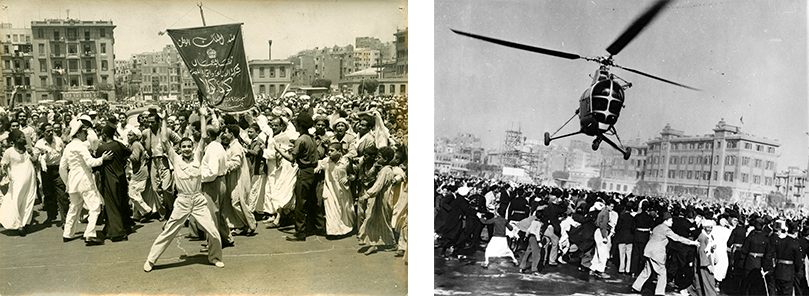
Egyptian well-wishers including the union of Coca Cola workers take to the streets to celebrate the second marriage of King Farouk to commoner Narriman Sadek on 6 May 1951. Crowds scurry for candy dropped from a helicopter in Cairo’s Abdine Palace Square in celebration of the birth of Crown Prince Ahmed Fuad II. Phot. unknown
While pictures showing a 250 pound Farouk in a bathing suit lying next to his teenage wife in an equally revealing suit were nothing shocking for Europe’s elite, they did nothing to help the king’s tarnished image at home. Whispers of his scandalous lifestyle started to filter into the army, which still felt cheated for the loss it sustained in 1948.
Though there were many indications that the end was near, Farouk did little to quell or appease the forces conspiring against him. Elements in the military had been working behind his back for some time, but instead of confronting them in July 1952, he ran off to Alexandria with his young family to escape the heat.

Narriman and Farouk pictured together in the summer of 1951 during their “honeymoon,” most probably taken on the Italian resort island of Capri. King Farouk and Narriman attending a party with friends. The man on left wearing hat is Antonio Pulli, one of Farouk’s closest advisors who used to be a palace electrician under his father. Phot. unknown
All things considered, Farouk was lucky to get away with his life. Previously, the British had always been there to keep the house of Mohammed Ali in order, but this time they chose to stay on the sidelines and watch. In a last ditch effort, the King turned to the Americans, whose influence was growing in the region. He was convinced that the new superpower, fearful of a communist takeover, would intervene on his behalf. To the Monarch’s surprise, it was the Americans who gave the final go ahead for the coup to take place.
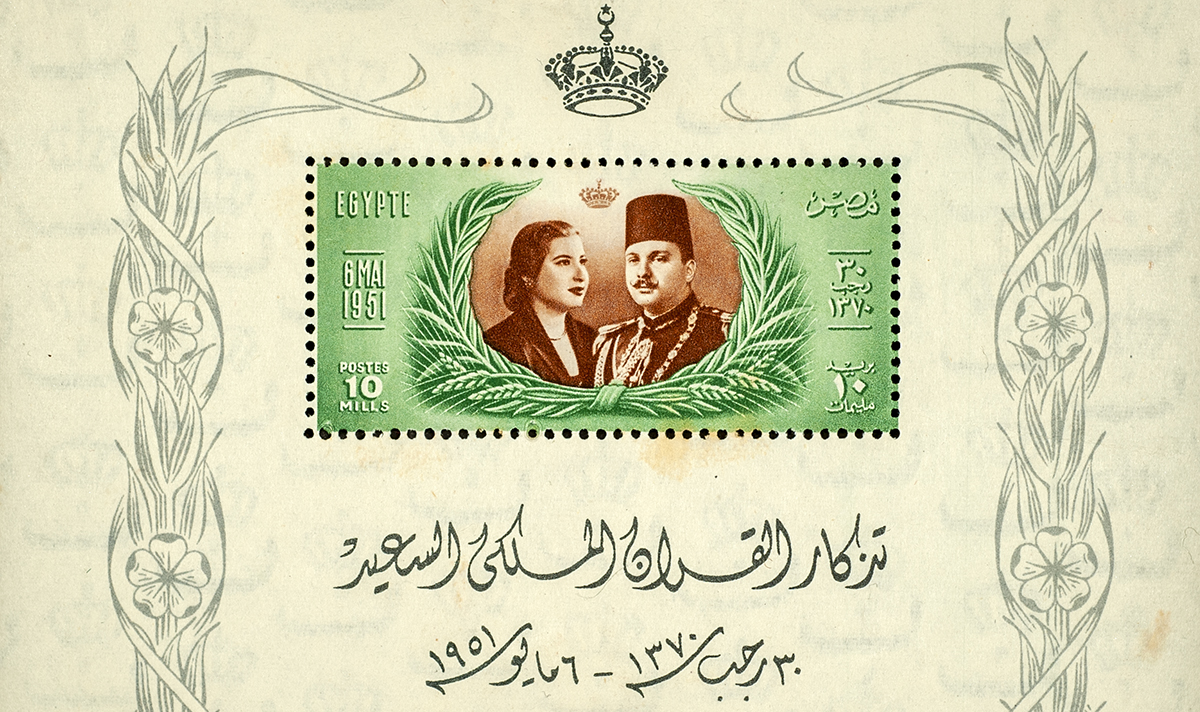
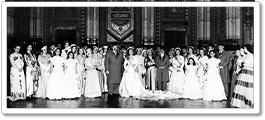

Where did you find, or who has the copyright to the picture of Narriman and Farouk in bathing costumes at the top of this page: http://www.photorientalist.org/exhibitions/farouk-and-narriman-egypts-last-royal-romance/article/. I would like to use it in a publication.
Regal Facts About Queen Narriman, The Cinderella Of The Nile
[…] 1, 2, 3, 4, 5, 6, 7, 8, 9, […]